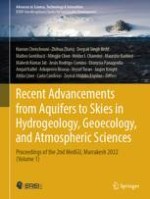2024 | Buch
Recent Advancements from Aquifers to Skies in Hydrogeology, Geoecology, and Atmospheric Sciences
Proceedings of the 2nd MedGU, Marrakesh 2022 (Volume 1)
herausgegeben von: Haroun Chenchouni, Zhihua Zhang, Deepak Singh Bisht, Matteo Gentilucci, Mingjie Chen, Helder I. Chaminé, Maurizio Barbieri, Mahesh Kumar Jat, Jesús Rodrigo-Comino, Dionysia Panagoulia, Amjad Kallel, Arkoprovo Biswas, Veysel Turan, Jasper Knight, Attila Çiner, Carla Candeias, Zeynal Abiddin Ergüler
Verlag: Springer Nature Switzerland
Buchreihe : Advances in Science, Technology & Innovation
